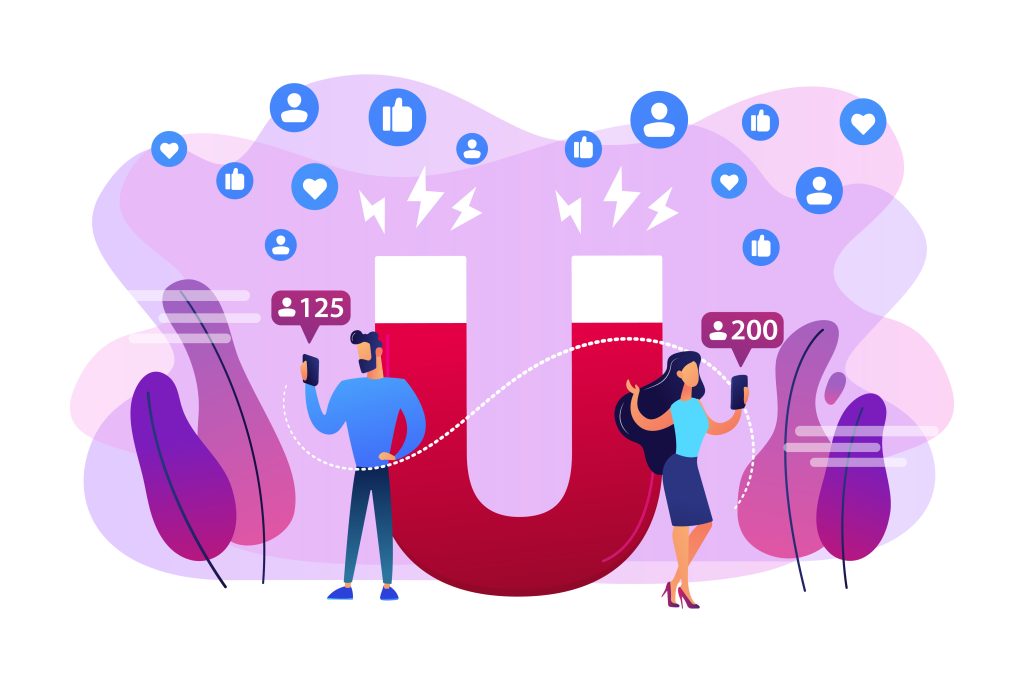
Image: Designed by vectorjuice / Freepik
The following post first appeared yesterday in the online Brand Equity edition of the Economic Times. I am reproducing this here, along with a little supporting data that has not been published in Brand Equity.
=========================================================
Here is a quick overview of lead generation, based in part on my own long experience. Less experienced sales and marketing people will find this useful. Others will also surely find a valuable nugget or two.
The importance of leads
Every individual needs a ‘lead’, some time or the other. Our parents accumulate tips on which school to send us to, we look for leads on which career and job would best suit us, we often even ask around for persons who we can choose as our life partner, enquire which home to rent or buy and so on and so forth. Leads are a fundamental aspect of our lives 😊.
Organizations too need leads. The difference: as individuals we usually need a handful of leads as we have just one ‘buy’ or one ‘sale’ (one school, college, life partner, job, home etc.) to make, while organizations usually need a large and an ongoing number of leads.
Lead generation by industry and type of lead
It’s also important to acknowledge that what a lead means differs from industry to industry. To a credit cards or insurance provider, it is a database that is pre-qualified as per a few data fields. In other industries, like university admissions or clinic appointments, the lead must necessarily be a warm one and generated exclusively for the brand in question, in effect it needs to be an enquiry.
Some organizations don’t need leads for their core business. E-commerce organizations – Amazon et al – have no need for leads. Nor is there is a need for free service like Gmail.
On the other hand, wherever prospective customers need time to think or need to wait before buying a product or a service, lead generation is a must have. Let’s call these the NUCCEA organizations viz. organizations with products or services that are new, unknown, perceived to be complex with many specific features (think consumer durables and industrial goods), in competitive industries (like university admissions), high value or expensive (think automobiles) or which need appointments (clinics, service engineers for fridge & TV).
Leads differ according to the response mechanism to gather the lead. The response can be a request a callback, request a demo, request a quote, confirm an appointment, register for a webinar, download a brochure or company deck, collect an offer or coupon, collect a resume etc. Requesting a callback via a form is the most common but by no means the only way of lead generation, it all depends on the industry and the context. We have seen that innovation in response methods as well as the use of multiple response methods (giving prospects an option) results in a significant increase in leads, other things being equal.
Online lead generation and some reflections on B2B and B2C
In the old days i.e. in the offline world, lead generation methods were cold calling, direct mailing, couponing and catalogs in print magazines, door to door sales visits and referral networks like BNI. And spam calls and SMS are a legacy of the growth in mobile a couple of years ago, all of us have experienced this not so effective lead generation method.
The advent of the Internet changed lead generation, with new response methods such as email replies, form submissions, inbound calls, callback requests and web chats. And the wide reach or user base of the Internet has made lead generation both scalable and much more commonly practiced than earlier.
Online, there are three ways to generate leads: via paid media (online ads), owned media (websites & SEO) and earned media (social media). Let’s examine each in turn. Before we do that though, let’s also bear in mind another trinity of online lead generation: leads quantity (or volume) of leads, lead relevance (or quality) and lead cost.
Social media for leads works well when one has a one-time requirement or one requires a small number of leads. Say, if an organization wants to hire a vendor or some developers and needs referrals for this. It cannot however be a key source of daily leads for the business per se. E.g. even if Domino’s Pizza India, which has close to 7 million Facebook followers, makes an innovative offer on its page on a weekend, it will not materially increase leads or sales for the brand: such an offer can at best make a small contribution to the overall business. However, the leads would be mostly relevant (all for pizza) and low cost (cost of the offer).
Next, let’s look at organic media viz. websites and SEO. Great B2B brands with large websites do generate a good number of leads. Thus, for example, one expects IBM’s website to do this well. In general, however, B2B brands do need to make a special effort with their websites and their content to be able to get more organic leads. Barring the most innovative of companies, this is usually possible only with large, established B2B players. For most other B2B brands, competition with other websites online and a small product assortment result in a low number of leads organically.
The key merit of organic leads is that they have high relevance, as the user locates and visits the website on her own. Another benefit is that costs are low, being essentially the cost of managing the website. However, scaling up numbers is a challenge.
B2B lead generation can certainly benefit by online advertising. B2B purchase cycles are usually long and the decision-makers reached out to are usually senior management, so one needs a well thought out campaign and content strategy on how best to be present 365 days online.
B2C brands that require leads – such sectors include education, financial services, health, automotive, real estate, home improvement services and consumer durables – cannot do without online advertising for lead generation. Neither social nor organic lead generation pull in adequate numbers: only online advertising does.
I said above that leads have three important attributes: quantity, relevance and cost. For online advertising for lead generation, if the ad spends are done as per the available demand or size of target audience, the relevance and the ad cost of the leads can be kept within acceptable limits. In practice, for each brand, there is an upper limit to the number of cost-effective, quality leads that can be obtained. Performance marketers know how to optimize campaigns to get the best results.
I have seen several cases where the number of leads via online advertising accounts for over half the brand sales. In effect, online advertising creates a new sales channel.
Lead closure
The steps involved between lead generation and sale are lead capture (lead generation), lead qualification, lead routing, lead nurturing (optional), lead scoring (optional) and lead closure (sale).
Lead nurturing is a way of igniting and expanding the interest of a potential lead, particularly in the case of high value products and services. Some ways of doing are inviting a person for a demo, a webinar or an event. Lead scoring complements lead qualification and nurturing and is used in situations where organizations would like to prioritize leads. This is done to allocate the scarce lead follow-up manpower available.
Post closure, after-sales follow-up can help to sell complementary products, to upsell and to get referrals for new customers. Another important post closure activity is reactivation of previously dead leads.
Organizational maturity
There are some well-accepted practices in converting leads to sales. One is the use of a proven lead management system, this can be a standalone system or part of a large CRM. Far too many organizations have not yet invested in one or yet to make good use of the system they have. Another is using lead analytics to optimize the online advertising campaigns.
Another proven practice is to contact newly generated leads ASAP. Research* shows that leads need to be called ASAP for best results. Consumer (B2C) leads need to be called up within an hour and all leads, both B2C and B2B are best responded to within a day. In case of no reply, 5 to 7 calls may be made over a 7 day period. New technologies like chatbots can be useful to minimize the workload on the call centre team, though it’s early days yet.
B2B organizations such as SAAS and software services have well established practices for generating and closing leads. So have many B2C ones e.g. financial services. In our experience, the average organization has yet to mature in its lead generation and lead closure practices.
Some interesting lead generation situations
I have in the course of my work encountered several interesting lead generation cases involving online advertising.
• For an accident claims company in the U.K., it was seen that the maximum claims happened starting from a Friday 5 pm till Sunday night. Motorists drove out of London and other metropolitan areas for the weekend, resulting in maximum leads around this time.
• For a veterinary clinic chain in the U.S., nearly all leads were incoming calls (not form leads) with high relevance and conversion (call to click ratio).
• A car battery company was sceptical that they could generate leads for their new battery, as car batteries are mainly provided by battery and garage service points. The company was pleasantly surprised to see calls coming in directly to the company in real time, which it then routed to their nearest dealer.
• A company into B2B services was able to generate leads from over 100 countries
• A U.S. company selling emergency equipment was able to get leads from very many fire stations in the nation.
As can be seen, beyond the commonly known industries like education, financial services, real estate et al, there are very many niche products and services that are benefiting from online lead generation.
Generating leads is a commonly occurring requirement. This primer on the subject might prove a useful refresher for today’s time-scarce sales and marketing people.
=======================================================
* Marketing Review St. Gallen, June 2021: “Online lead generation: An emerging industry”: Simon Stolotz et al.
The link to the article in yesterday’s Brand Equity – which is where this piece first appeared – is here.
